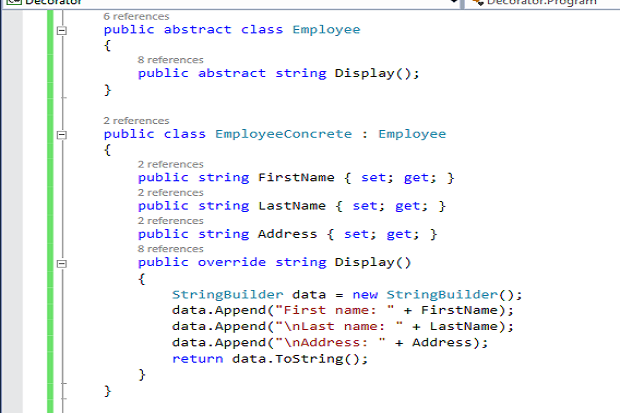
The speed of light in vacuum, commonly denoted c, is a universal physical constant important in many areas of physics. Its exact value is defined as 299 792 458 metres per second (approximately 300 000 km/s, or 186 000 mi/s).
Watch The C-SPAN TV Networks
C was chosen because it was general-purpose, fast, portable and widely used. As well as C and Simula's influences, other languages also influenced this new language, including ALGOL 68, Ada, CLU and ML. C# Cheat Sheet; Introduction Outline Design Pattern Visual Studio Basics Powered by GitBook. Design Pattern Creational Patterns. Pattern Description Image; Abstract Factory: Creates an instance of several families of classes: Builder: Separates object construction from its representation.
Free with your TV subscription.

NOW: Senate Judiciary Committee Hearing on Voting Rights
NOW: Nicholas Dujmovic Discusses 60th Anniversary of the Bay of Pigs Invasion

Lawmakers and advocates testify on voting rights at a Senate Judiciary Committee hearing.
Javascript must be enabled in order to access C-SPAN videos. Sensoray driver download for windows 10.
What are Design Patterns?
Design patterns are solutions to software design problems you find again and again in real-world application development. Patterns are about reusable designs and interactions of objects.
The 23 Gang of Four (GoF) patterns are generally considered the foundation for all other patterns. They are categorized in three groups: Creational, Structural, and Behavioral (for a complete list see below). This reference provides source code for each of the 23 GoF patterns.

C# Design Patterns
C Spire
Safenet motherboards driver. To give you a head start, the C# source code for each pattern is provided in 2 forms: structural and real-world. Structural code uses type names as defined in the pattern definition and UML diagrams. Real-world code provides real-world programming situations where you may use these patterns.
A third form, .NET optimized, demonstrates design patterns that fully exploit built-in .NET features, such as, generics, delegates, reflection, and more. These and much more are available in our Dofactory .NET product. See the Singleton page for a .NET Optimized example.
Creational Patterns | |
| Abstract Factory | Creates an instance of several families of classes |
| Builder | Separates object construction from its representation |
| Factory Method | Creates an instance of several derived classes |
| Prototype | A fully initialized instance to be copied or cloned |
| Singleton | A class of which only a single instance can exist |
Structural Patterns | |
| Adapter | Match interfaces of different classes |
| Bridge | Separates an object’s interface from its implementation |
| Composite | A tree structure of simple and composite objects |
| Decorator | Add responsibilities to objects dynamically |
| Facade | A single class that represents an entire subsystem |
| Flyweight | A fine-grained instance used for efficient sharing |
| Proxy | An object representing another object |

C# Design Patterns Cheat Sheet Printable
Behavioral Patterns | |
| Chain of Resp. | A way of passing a request between a chain of objects |
| Command | Encapsulate a command request as an object |
| Interpreter | A way to include language elements in a program |
| Iterator | Sequentially access the elements of a collection |
| Mediator | Defines simplified communication between classes |
| Memento | Capture and restore an object's internal state |
| Observer | A way of notifying change to a number of classes |
| State | Alter an object's behavior when its state changes |
| Strategy | Encapsulates an algorithm inside a class |
| Template Method | Defer the exact steps of an algorithm to a subclass |
| Visitor | Defines a new operation to a class without change |
C# Design Patterns Cheat Sheet Example
